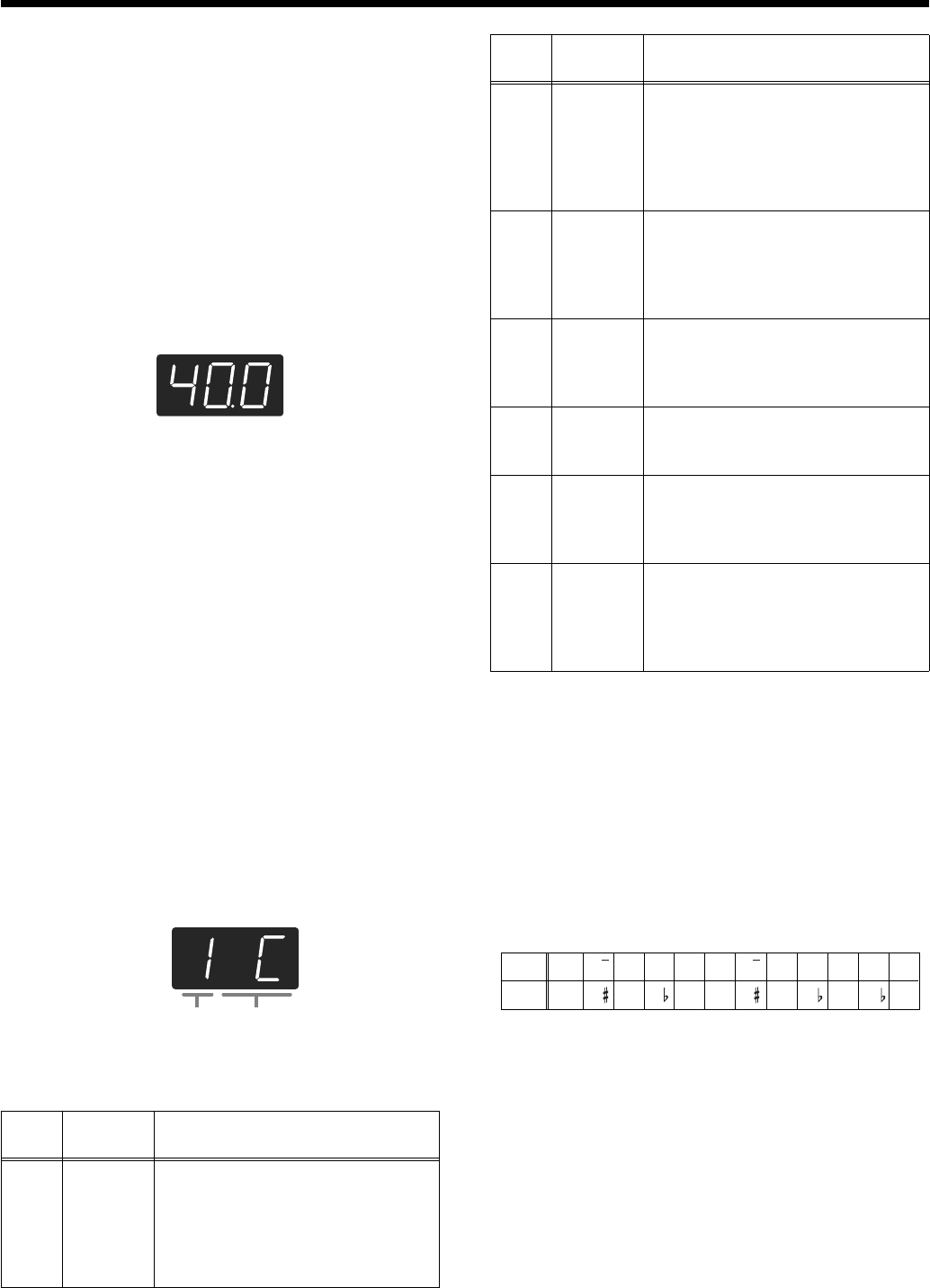
36
Chapter 5. Changing Various Settings
■
Tuning to Other Instruments’
Pitches (Master Tuning)
In situations such as when playing ensemble with other
instruments, you can tune the HP103’s standard pitch to the
pitch of another instrument. The standard pitch generally
refers to the pitch of the note that’s played when you finger
the middle A key. This tuning of all the instruments to a
standard pitch is called “tuning.”
If you press
the [Piano] button
in step 2 of “Making
Detailed Settings (Function)” (p. 35), a display like the
following will appear.
fig.disp-tune
The last three digits are indicated in the display. “440.0 Hz”
is indicated in the figure above.
Value
415.3 Hz–440.0 Hz–466.2 Hz
Power-up default setting
440.0 Hz
This setting remains in effect until you turn off the power.
■
Changing the Temperament
You can play classical styles such as Baroque using historic
temperaments (tuning methods).
Today, compositions are generally created with equal
temperament in mind and are played using equal
temperament. However in past ages of classical music, a
variety of temperaments were used. Playing a composition
with its original tuning lets you enjoy the sonorities of the
chords that the composer originally intended.
If you press
the [E.Piano] button
in step 2 of “Making
Detailed Settings (Function)” (p. 35), a display like the
following will appear.
fig.disp-temp.j
You can choose from among the seven temperaments
described below.
Power-up default setting
1 C
Tonic
When playing with tuning other than equal temperament,
you need to specify the tonic note for tuning the song to be
performed (that is, the note that corresponds to C for a major
key or to A for a minor key).
While hold down
the [E. Piano] button
, and press
a note
to
specify the desired tonic key.
The tonic note you specify will be displayed as follows.
fig.Chart_note2.j
If you choose an equal temperament, there’s no need to select
a tonic note.
* If you record with a temperament other than equal
temperament selected, and then want to play back that
performance, use this setting to select the same temperament
for playback as the temperament you used when recording.
* When performing in ensemble with other instruments, be
aware that depending on the key, there may be some shifting of
the pitch. Tune the HP103 to the fundamental pitch of the
other instruments.
Dis-
play
Temper-
ament
Qualities
1
Equal
In this tuning, each octave is divided
into twelve equal steps. Every
interval produces about the same
amount of slight dissonance. This
setting is in effect when you turn on
the power.
Temperament Tonic
2
Pythagor
ean
This tuning, devised by the
philosopher Pythagoras, eliminates
dissonance in fourths and fifths.
Dissonance is produced by third-
interval chords, but melodies are
euphonious.
3
Just
Major
This tuning eliminates ambiguities in
the fifths and thirds. It is unsuited to
playing melodies and cannot be
transposed, but is capable of
beautiful sonorities.
4
Just
Minor
The Just tunings differ from major
and minor keys. You can get the
same effect with the minor scale as
with the major scale.
5
Mean
Tone
This scale makes some compromises
in just intonation, enabling
transposition to other keys.
6
Werck-
meister
This temperament combines the
Mean Tone and Pythagorean
tunings. Performances are possible in
all keys (first technique, III).
7
Kirn-
berger
This is an improvement of the Mean
Tone and Just tunings that provides a
high degree of freedom of
modulation. Performances are
possible in all keys (III).
Dis-
play
Temper-
ament
Qualities
C C d E_ E F F G A_ A b_ b
C C D E E F F G A A B B
Display
Letter
name
HP103_e.book 36 ページ 2005年3月24日 木曜日 午後4時58分


















